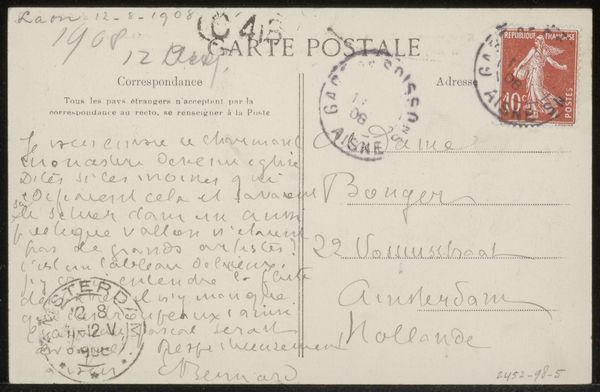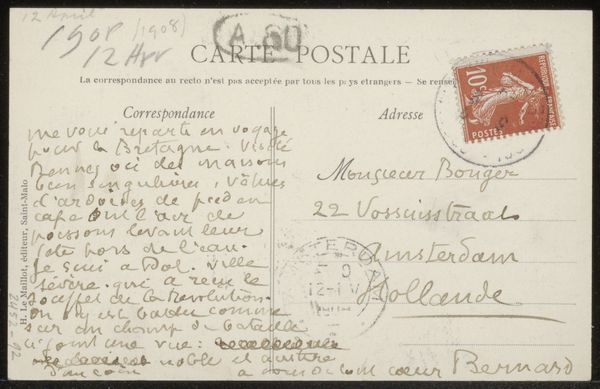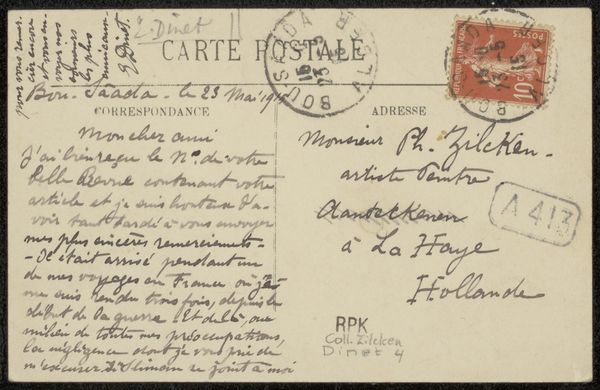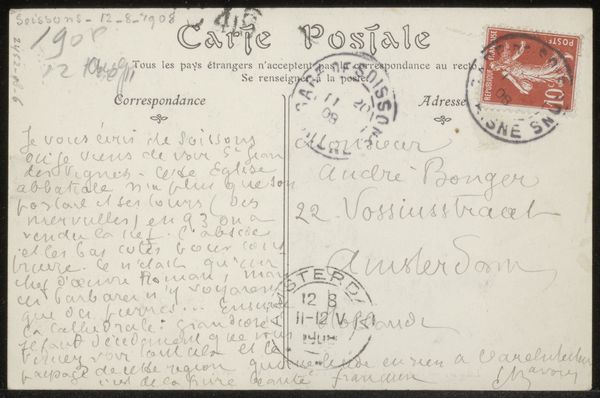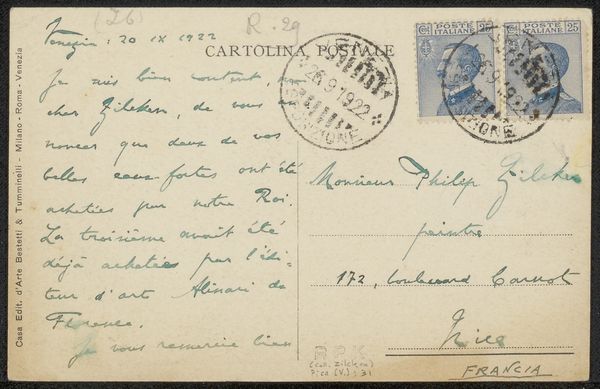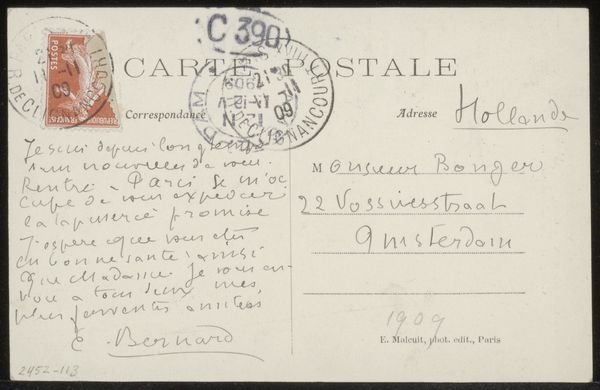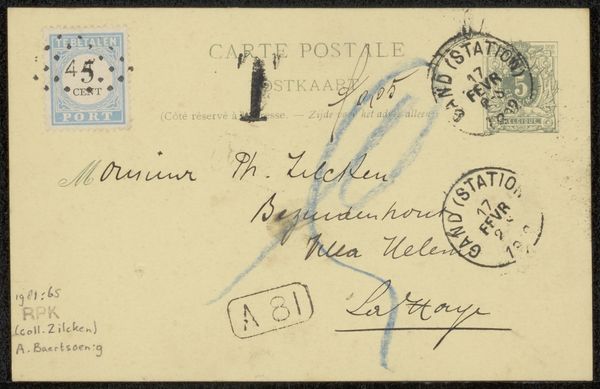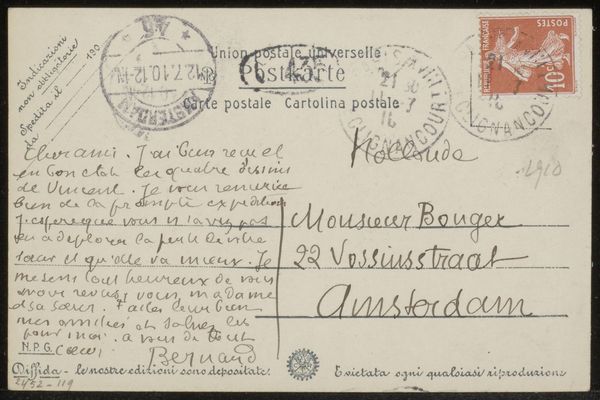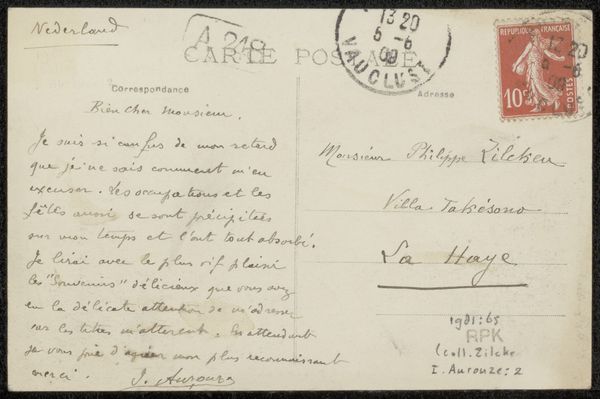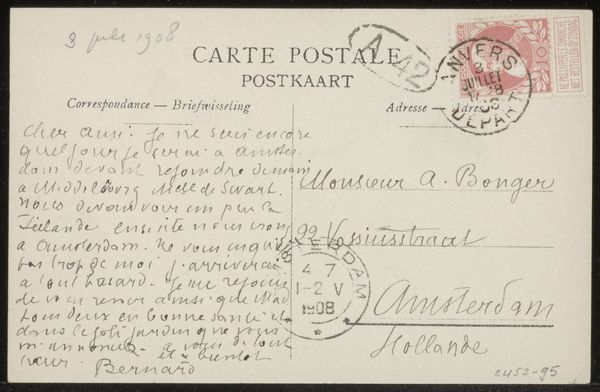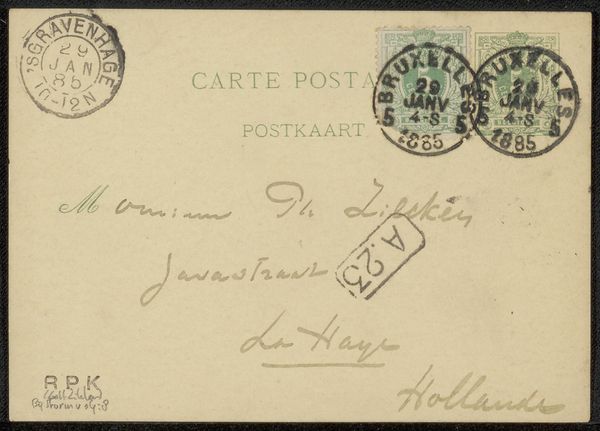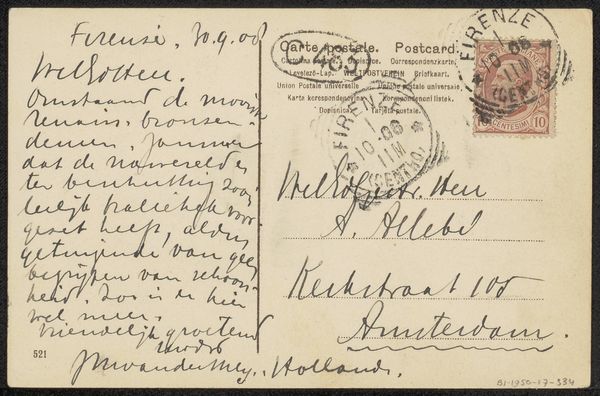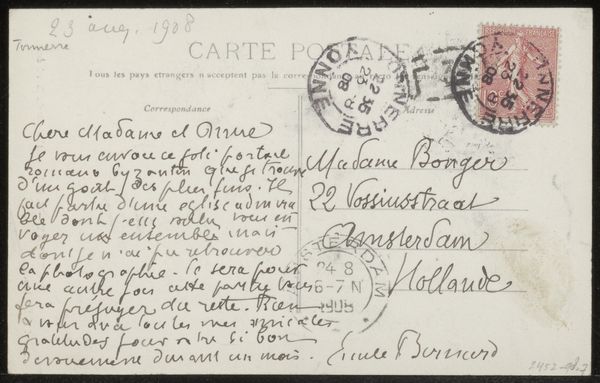
Copyright: Rijks Museum: Open Domain
Editor: Here we have "Prentbriefkaart aan Andries Bonger," a pre-1908 drawing by Émile Bernard, rendered in ink on paper. What immediately grabs me is the juxtaposition of the sender’s beautifully looping cursive with the structured, almost grid-like, layout demanded by a postcard. It's a study in contrasts, almost a conversation between form and function. What do you see when you look at this? Curator: Intriguing observation. Initially, I'm struck by the relationship between text and image. The handwriting itself becomes a dominant visual element. The flourishes and varied line weights possess an expressive quality independent of their semantic content. Note how Bernard uses the constraints of the postcard format – the pre-printed lines, the reserved space for address and stamp – as a framework upon which to build his composition. It's almost a rebellion against the expected uniformity. Consider the tension created by the density of the written message versus the relative emptiness of the address field. Do you perceive a similar push-and-pull? Editor: I do. The handwriting seems to be pushing against the borders, especially on the correspondence section of the postcard. Do you think that tension might have meaning beyond just the visual arrangement of the piece? Curator: Certainly. The energy contained within those boundaries, both visual and textual, suggests a restless spirit perhaps, eager to communicate, but constrained by distance and formality. Note the carefully chosen words of the Post-Impressionist Bernard: we also might examine how these elements interact—and what happens when those lines begin to blur? Editor: That is helpful in framing it all within the artistic landscape. It’s fascinating to think about how an everyday object like a postcard can be such a compelling work. Curator: Indeed. And that’s the power of close observation, isn't it? We begin to see the inherent aesthetic qualities even within the most utilitarian forms.
Comments
No comments
Be the first to comment and join the conversation on the ultimate creative platform.
